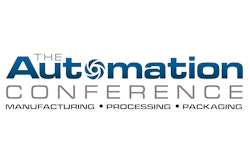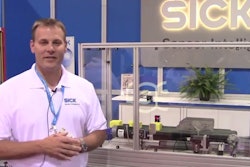With proper focus, detail, and team participation, a successful FAT can be the difference between a successful vertical start-up and frustration as the plant struggles for days or even weeks. Consider the following tips as a roadmap to a successful Factory Acceptance Test:
1. Provide a detailed test plan. The FAT is the time to discover failures or issues, determine reliability, verify efficiencies, and explore how the machine should handle failures. The test plan should be prepared up front and submitted to the supplier as part of the Request for Quote (RFQ). The machine will not perform as expected if the criteria aren’t specified; neither will performance be competently assessed. Clearly state in the contract all the responsibilities, accountabilities, and deliverables, in a measurable way. These must be quantifiable and agreed upon to eliminate finger-pointing. Doing so makes it easier for all parties by eliminating second-guessing. Specify how long the machine should be dry-cycled; 24 hours minimum is recommended. Specify how many packages should be produced and at what speed. Specify disposal plans for finished packages. Although you’ll pay for the FAT, most equipment suppliers will agree to a provision that if the machine fails, any subsequent test is free. Having a detailed test plan will help ensure that you don’t shortchange the FAT. Performing a brief, shallow FAT will inevitably show up as a problem in the third shift, nine months down the road.
2. Push the envelope, but use the right materials as well. In the FAT, use the materials that will be put in operation during actual production. Not using them may compromise test validity. You can stretch the system with noncompliant materials and processes to better understand operational flexibility (wildcard testing), but the most important results will be those gleaned from using the materials you actually employ in your process.
3. Engage the operators and technicians. Focus on the personnel who will ultimately be responsible for running the machines, those who “own the line.” Sending engineers isn’t sufficient; the operators will see what makes the most sense on the line. The people who will run the equipment daily are uniquely qualified to make observations beyond the specifications and recognize issues or flaws prior to delivery. Additionally, the ownership aspect is invaluable, as the best technology going into a plant is not going to work if the operators are not comfortable with it, or have no faith in it. Engaging the production team early in the process is one of the most important aspects of new equipment design. The FAT provides a structured and empowering opportunity. Do not miss this one!
4. Be smart about training. If training is provided as part of the FAT, make sure the people being trained are those who will run the line, not the engineers. Train and educate the right people.
5. Create and follow a detailed “failure script.” Make an inventory of the type of failures that you’ve experienced or might experience in production, as well as expected outcomes. Use this checklist to fully assess machine performance during the FAT. Machines have a natural backup curve that is all about early failures. Running, even dry running, is very critical; you can find leakage, electronic failures, and more, and then make sensible engineering changes. You can’t reap the benefits of testing if you don’t do the testing. Changes made at the FAT stage are the least-expensive ones; many times you don’t even pay for them.
6. Test parts replacement and changeover procedures. Test how long it takes to replace the most common wear parts. Determine how to remove a defective part and document the process in an easy-to-use format such as a One Point Lesson (OPL). Using your technicians and operators at the FAT, practice changeovers, and start-up and shut-down protocols. See where the users encounter difficulty and elicit their input and ideas. Leverage the opportunity to modify the equipment, standardize the procedures, and document in an OPL format with numerous pictures.
7. Check safety with a keen eye. Complete a review of the equipment from a safety perspective. Look for poorly guarded areas and pinch points. Run your hands across the machine (carefully), looking for sharp edges and burrs. Test to ensure all limit switches and emergency stops are fully functional, robust, and appropriately placed. Test for flaws in all built in safety components. Are there any safety options missing? Is making the machine LOTO (Lockout/Tagout) easy, or are there unexpected sources of energy that could cause injury? (Lockout/Tagout refers to the act of disabling all sources of energy such as electricity and compressed air while physically locking down the machine so that it doesn’t cause injury due to movement while the machine is being worked on.)
8. Take your time. Take your time on the FAT, especially with highly customized machines. Why would you take a million-dollar project and squeeze the FAT into a six-hour window? Don’t worry about relatively small expenses. Some testing will be more challenging than others. For example, high-speed testing can be difficult due to the sheer volume of product needed for the test. Never trade away adequate factory testing to meet a shipping deadline. You will ultimately pay the price for this in longer start-ups and lost productivity at the factory.
9. Get a good integrator. This is key. Tie into other equipment suppliers; test everything together. Sometimes it’s worth the money to run everything together on the integrator’s floor. It costs money, but saves it in the long run. Get as much of the peripheral equipment together on the same floor at the same time as soon as you can. Test as much as you can. You can never over-test equipment reliability and range of operation.
10. Work with your supplier, and your supplier will work with you. A successful FAT is in both parties’ interest. Not all (or many) machinery suppliers have factories set up to perform a well-rounded FAT for customers. Some will build or mock up complete systems, but duplicating a customer’s process can be very difficult and expensive. Suppliers may be able to prove to the end user that their machine can perform in the manner desired during pre-sales (or pre-PO) product-testing procedures. Once customers are satisfied that equipment can do what they want it to do, POs are issued. Increasingly, customers are simply looking for a video testimonial that the machine actually runs before it leaves the supplier’s facility, in lieu of a FAT. That being said, savvy customers will continue to demand FATs and training in a supplier’s facility before the machine ships. Some suppliers are expanding their facilities to include more FAT handling, in a private, secure environment, where strict confidentiality of all technologies is assured.
11. Know the difference between a Factory and Site Acceptance Test. One of the biggest areas of confusion surrounding the FAT is over whether it should simulate how the machine responds under actual factory conditions. In fact, that is the purpose of the Site Acceptance Test (SAT). In the machinery builder’s plant, it may be difficult or even impossible to simulate both the production volume and the conditions of your product, especially for more than a few minutes. This is especially true if the product will be packed at a certain temperature, or has a certain consistency or rate of speed coming out of production. Much time, energy, and money has been spent in vain trying to address “failures” in the machine builder’s plant, only to find that the machine works perfectly once in production at the customer’s plant.
The purpose of the FAT is to verify the desired functionality of the machine. On acceptance of a FAT, you’ll be looking for items such as:
• Completed FAT protocol
• Maintenance and users’ manuals
• Easy-to-use training materials (OPLs, videos, etc.)
• Standard work procedures
• Standard maintenance procedures
• Recommended spare parts lists
• Certificates of compliance
• As-built technical drawings (electrical, mechanical, pneumatic, and process schemes)
• Materials certificates and data sheets
• Main equipment data sheets
• Instruments calibration certificates
• Welding processes qualifications
The purpose of the SAT is to affirm that the machine runs your product to your specifications in its operating environment. Knowing the difference between a FAT and SAT can save you and the supplier time, money, and aggravation.
Liked this article? Download the End of Line Playbook here. Download the Primary Playbook here. Download the Labeling Playbook here. Download the Flexible Playbook here.


























